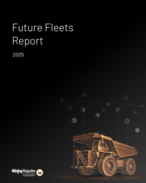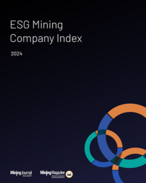This article is 15 years old. Images might not display.
BHP chief commercial officer Alberto Calderon expects China to experience solid growth next year even though there are risks in the pace of loan growth and overstocking.
“China’s steel recovery has been fast and robust, and is likely to contain some overstocking that could lead to either lower production or higher exports in the short term,” Calderon said in the global miner’s marketing brief this week.
He said the sustainability of China’s import demand did hinge on the quality trends of domestic metallurgical coal and location of new steel mill capacity in relation to China’s coal resource.
“In our view, existing and new coastal mills would be receptive to sustainable imports of small percentages of good quality coking coal. However, they will of course be price-sensitive,” Calderon said.
Looking at metallurgical coal demand, reflected in pig iron production which eliminates electric arc furnace production where coking coal is not used, Calderon said it had bottomed out.
Global pig iron production is off 14% year to date, but Calderon pointed out blast furnace restarts over the next couple of months would lift levels to just a 3-4% slip on last year.
In China, which produces more than 60% of global pig iron output, production has remained steady and is actually up 6% year to date. However, BHP expects second-half production to ease, although China will still record impressive year-on-year increases.
India has also contributed to stability in the pig iron market, with production up 1.6% in the year to date. Spot coking coal prices in India are now trading well above Japanese benchmark prices.
BHP said with idle capacity in India set to restart, while there would be a lag before the new tonnes were delivered to the market, metallurgical coal prices would stay at around current levels.
“While most developed economies still show negative pig iron production year-on-year, the month-on-month improvements from April lows are compelling,” Calderon said.
Looking at seaborne markets, traditional markets have lagged significantly in the year to date; however, Chinese import demand has soaked up the idle extra production, so the seaborne market has been far tighter than many had forecast, BHP said.
“Industry consultants estimate that the accidents in Shanxi Province in February impacted coal production by around 35 per cent. That is pretty significant, as Shanxi produces around 50 per cent of China’s metallurgical coal production. Around 60 per cent of this lost production now appears to be back online,” Calderon said.
When questioned on BHP’s responsiveness to an increase in coking coal demand, Calderon said the company was “expanding as aggressively as we can in coking coal”
He flagged a 3-4 million tonne per annum project that is going into feasibility study. However, he said BHP would continue to be hampered by infrastructure bottlenecks.























